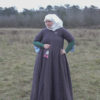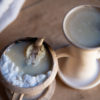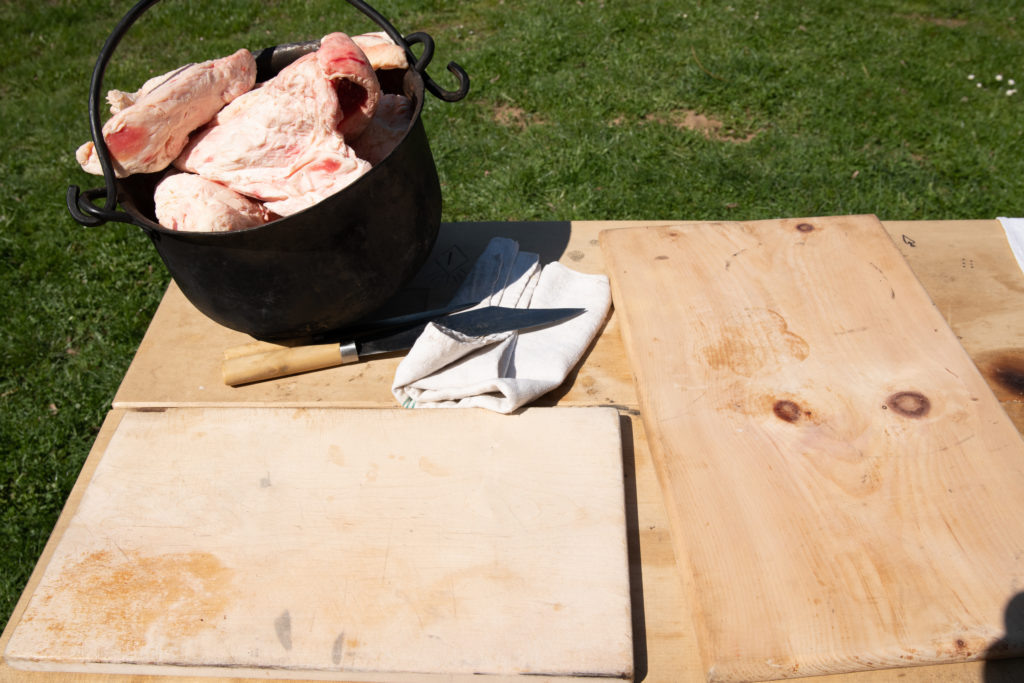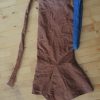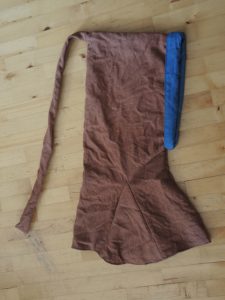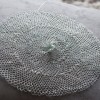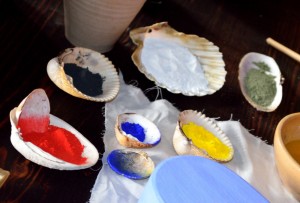Blog
All posts from the category "Tutorials".
Today we would like to show you some sources and techniques for doing laundry in the 14th and 15th century.
When reconstructing medieval life, especially medieval clothing, one needs to maintain a fine balance. Especially if one is not 20 any more, you have more options for going about your impression. Because there were without question those who did not follow the latest fashion, those who work hard, who are very religious or who generally follow more conservative views of fashion. We know of those people when we read moral texts from our period, when we read sumptuary laws, inheretance registers and mundane letter correspondences.
But the decision, which elements to choose for a certain point in time and a certain region in order to appear conservative or fashion-forward, is difficult. You choose between profane and religious art, between what moral writers condemn and what they propagate, between local tradition and foreign influence.
At the moment I am planing a very unusual surcot for my 1350s wife of a well-off crafter. When researching, I did however come across many overdresses that were quite conservative, loose cut and not exactly what other countries in this time already had to offer. So without question, there was still a large trend for that kind of clothing in my area as well.
So I decided, in order to extend my repertoire, i should also make a version of a surcoat that mirrors this world view and started an inbetween project.
We have talked about it before. After about 8 years of events, we used up the last bits of our homemade tallow reserves and needed new material (of course we also bought and used some ready made tallow in the meantime).
Our event at the open air museum Bärnau was the ideal occasion for cooking it. I ordered about 5 kg of beef fat a the butchers for app. 15 EUR.
On one of our events at the Museum Tiroler Bauernhöfe last weekend, I did a little lecture on hair care and hair dos as well as hair in general. I brought this to digital paper now to be able to link it in the future.
Please do follow also the links in the text to find further reading material, original sources and intersting tutorials.
On the occasion of the “Straw hat month April, I have tried my skills at another project, a straw hat in the technique of the Lengberg finds. I had started it last August at our event at Bachritterburg Kanzach. Since I experimented with the technique for another impression of mine , I still had a lot of the material left.
During vitalizations of open air museums, we often have the problem of missing tools for the every day tasks that are supposed to be the main occupation during vitalizations (as opposed to workshops, historical craft and shows). When showing every day life in historical houses, you need a lot of equipment that is often not provided by the museum itself.
Butterchurns are one of these every day life tools.
I just wanted to give you a little glimpse on a technique which is fairly new to me and which I am about to try out for the first time, filet knitting or netting.
Unfortunately I could not find a lot of information about the technique in its medieval form. I was very impressed by this tutorial here from Via Nostra (Thanks a lot!), which uses the techniques described by Therese de Dillmont and Katrin Kania.
I asked my husband to film me while netting.
Since this question is asked so often in different online forums and on Facebook, I thought, I would put together a practical, rough guide to medieval paint applications for all kinds of paintwork.
Before I start, I recommend to have a look at the literature recommendations at the end, which are in my opinion essentials if you want to work on the topic (some I have in a german translation, but I am sure you can find a good english one easily).
On the mixtures: In painting, there are no fixed rules. Every painter finds his own mixtures and recipes for the particular task at hand. It is definitely something that needs time to get experienced in. I will show you some basic mixtures and you can go on from there.
Since I accompany my husband in and his group of Ancient greek reenactors and we both participate in Stone age activities together, it was about time for him to join me and my oldest baby, the 14th century AD. I thought you might be interested to see my journey through making a complete period costume for him from zero to hero.





